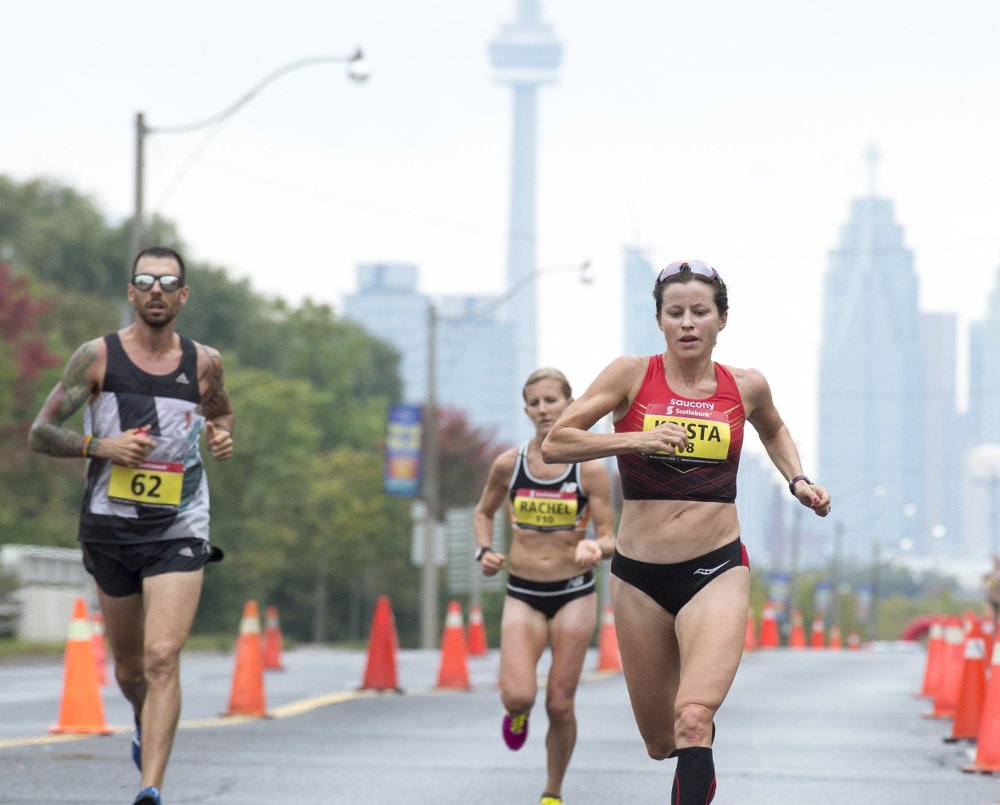Go the distance with Krista Duchene’s monster marathon workout
Practice running at marathon pace and then slightly faster to prepare for the demands of 42.2K


When it comes to maximizing marathon performance, there are few better athletes to ask than Brantford, Ont.’s Krista Duchene. Duchene is Canada’s second fastest female marathoner with a personal best of 2:28:36 from 2013 and recently finished third overall at the 2018 Boston Marathon. She has set her sights on the Scotiabank Toronto Waterfront Marathon (STWM) this fall and now as a master, has both personal and masters records to take down.
RELATED: Krista DuChene to return to 2018 Scotiabank Toronto Waterfront Marathon
We asked Krista what her favourite marathon-specific workout is and how we mere mortals can also train to be our best. “I think the long marathon-pace workouts are the key to success and serve as the foundation for meeting your race goals,” Krista tells us. “This means spending significant amounts of time running at race pace as well as slightly faster and is also a great way to build endurance as the overall volume of these efforts tends to add up.”
What’s the workout?
Here’s a workout Krista did recently (specifically 11 weeks pre-STWM):
40-minute easy warm-up
40-minute tempo at marathon pace
20-minute easy
20-minute tempo at around half-marathon pace
Finish with a cool down to reach your desired time or distance (which was 37K in Krista’s case and also served as her weekly long run).
“I should add that the duration of the different paces would vary depending on where an athlete is in their marathon build,” notes Krista. Early in the build, one could start with 20 minutes of marathon pace and 10 minutes of tempo and gradually build–such as by adding 5 minutes of marathon pace and 1 or 2 minutes of half-marathon pace–each week or two. During peak training (around four weeks before one’s goal race) some athletes might consider running up to 60 minutes at marathon pace with 30 minutes at half-marathon pace.
When and where?
These workouts are done regularly throughout the build, every two-to-three weeks, and in many cases will also act as your long run. “I enjoy doing mine on the treadmill, something I’ve done for years, and where I can be precise with my paces as well as practice taking fluids and fuelling.” However, a loop on the roads or trails is likely the way most would implement this workout so they can have consistent access to bottles and gels. If possible, you could also practice running on parts of the race course itself to specifically prepare for race day.
Why this workout?
Running marathon pace for longer periods throughout the training block builds both confidence and race-specific fitness. It allows you to become comfortable and rhythmic, locking into race pace. Pushing a bit harder in the second part of the workout during the half-marathon tempo session allows you to do the same in a race, although you will likely be pushing just to maintain race pace in the final kilometres of the marathon when it inevitably gets difficult. It’s also nice to see your progress throughout the season as you get fitter from the training and as race day approaches.
Other suggestions, modifications, tips, etc.?
Make sure you adjust your pace so that you feel challenged but in control and are able to finish the entire workout. This is definitely something to take seriously during the hot and humid summer months that precede fall marathons. When it comes to selecting which pace to run at, be conservative to start and use a tune-up race to gauge your current fitness. You can then adjust as needed. Also be sure to plan and practice your fuelling and hydration, preferentially by using what will be provided on the race course.


